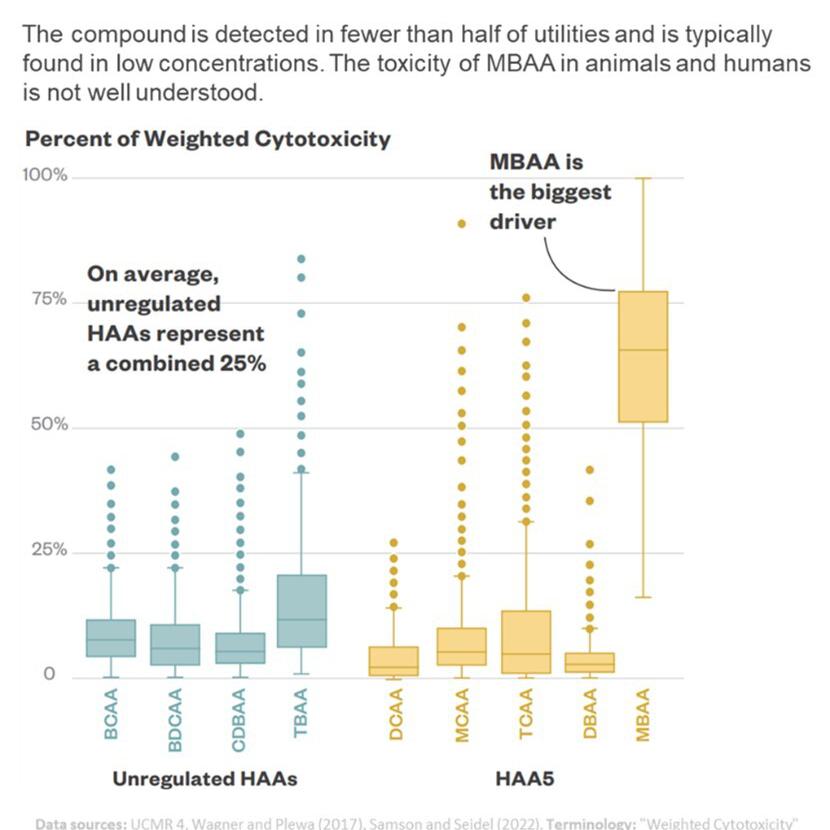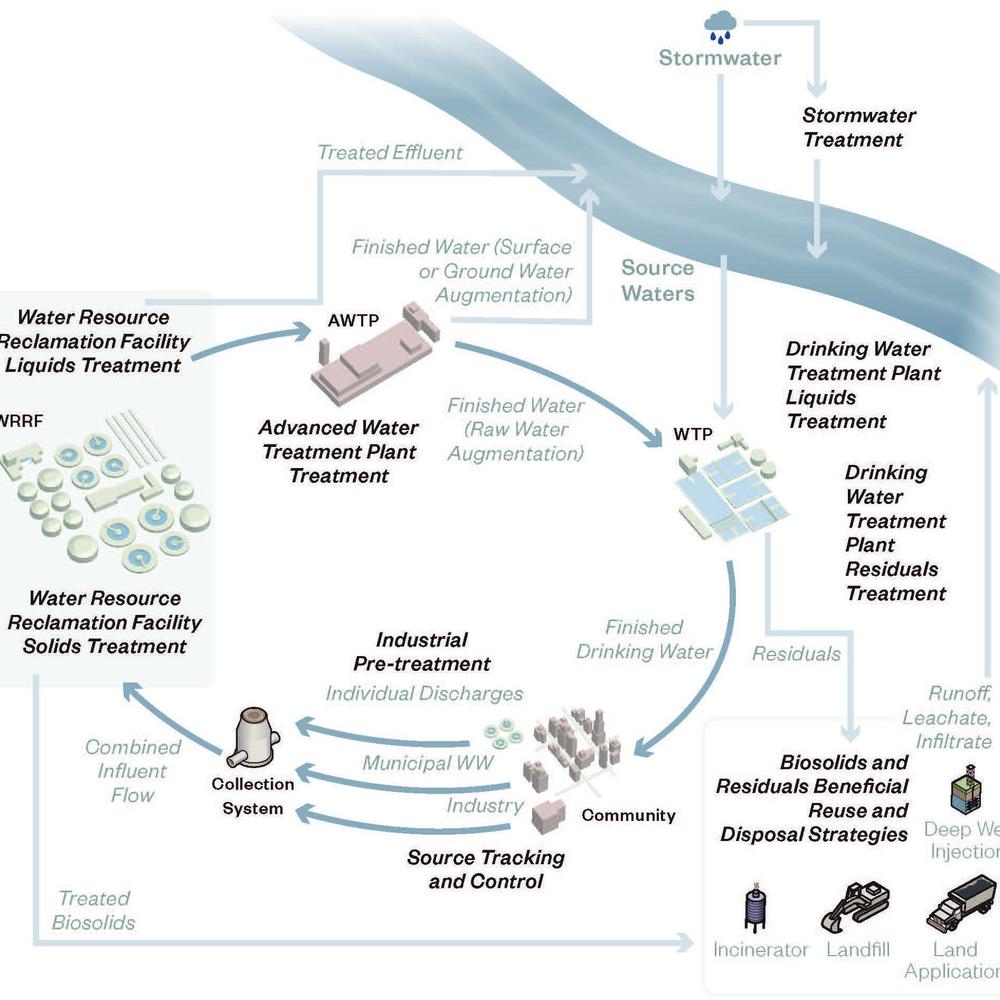Evaluating Grit Characteristics and Removal Performance
Using the ViCAs Method to Conduct a Grit Study at the Noman Cole Jr. Pollution Control Plant
Last Modified Dec 02, 2022
The Noman Cole Jr. Pollution Control Plant (NCPCP) is a 67 MGD wastewater treatment facility in Lorton, VA, owned and operated by Fairfax County. Treatment is currently comprised of coarse screening of raw wastewater, primary clarification, step feed biological nutrient removal (BNR), secondary clarification, tertiary denitrification via a moving bed bioreactor (MBBR) supplemented with methanol, tertiary clarification with ferric chloride addition for phosphorus and TSS removal, filtration, and disinfection. NCPCP currently relies on primary clarification to remove sludge from the liquid stream. Primary sludge de-gritting is then performed to achieve grit removal.
Fairfax County is currently planning an expansion of the Primary and Secondary Treatment Systems at NCPCP to 80 MGD. Because inadequate grit removal can have a detrimental impact on the usable life of mechanical equipment and on downstream treatment processes, it was necessary to better understand influent grit characteristics and evaluate the existing grit removal performance. This information will help inform future treatment needs at NCPCP.
A grit study to evaluate the diurnal variations in grit characteristics and the grit removal efficiency across the primary settling tanks was therefore performed at the NCPCP. The grit characterization method used to perform this study was the ViCAs method. The data collected from this study builds on the grit characterization research presented at previous WEFTECs to provide insight into the dynamic variation of influent grit and the evaluation of grit removal performance in primary settling tanks (PSTs) within full-scale Water Resources Recovery Facilities.
Related Topics:

Materials and Methods
Grit Characterization
The ViCAs method of grit characterization was originally developed by Chebbo & Gromaire (2009). Plana et al. (2018) validated the ViCAs method through a comparative analysis using the elutriation method of grit characterization, and its repeatability was demonstrated by Chebbo & Gromaire (2009).
The ViCAs method utilizes a 5-gallon wastewater sample, which is poured into the custom ViCAs settling column, to characterize the settling velocity distribution of the settleable solids in the wastewater. A schematic of the ViCAs column is shown in Figure 1.
A vacuum draws the wastewater upwards into the column and provides an upward force during the analysis, preventing the sample from emptying into the trough, allowing only suspended solids to settle out. A tray at the bottom of the column collects the settled particles. This tray is removed and replaced at predetermined time intervals. The solids collected at each interval during the 60-minute test are dried and weighed. The mass of solids settled during each time interval is used in an empirical formula, selected and evaluated by Chebbo and Gromaire (2009), to determine the settling velocity distribution of the sample’s suspended solids.
A data check was applied to the mass of solids collected at each time interval to evaluate if solids were settling out of the column during that time interval, or if the reported solids was from the TSS of the sample in the trough. Corrections to the data were performed according to the results of this data check. These tools enabled the use of the ViCAs column for wastewater with little to no fast-settling solids (solids that settle within the 60-minute ViCAs test duration).
A common sand equivalent sizes (SES) range used in grit removal technologies’ performance guarantees is between 100 – 250 microns. This range corresponds with settling velocities between 2.2 ft/min – 7.3 ft/min. Therefore, this study defined grit as particles with settling velocities greater than 2.2 ft/min.

Sample Collection
5-gallon grab samples for ViCAS grit characterization were taken from three sampling locations (red stars in the graph below): screened plant influent, primary influent, and primary effluent, as indicated in Figure 2. The samples were not altered before the ViCAs grit analysis was performed. The primary influent samples were used as the basis for evaluating the grit removal performance because it is downstream of the de-gritting wash water return. Therefore, these samples account for all solids that must be processed in the PSTs.


Results
Grit Characterization
This study used the ViCAs method to characterize diurnal influent grit characteristics at the NCPCP. Results, illustrated in Figures 3 and 4, illustrate that the peak grit concentration and load occurs around mid-day, when flows are also high. These results suggest that approximately 15 – 20% of the fast-settling solids in the primary influent are grit particles, with settling velocities greater than 2.2 ft/min. The variations in grit concentration observed through the diurnal analysis has been verified through comparison with ViCAs grit characterization data with another facility (“Plant 2”).
Grit Removal Efficiency at NCPCP
Grit removal across the primary settling tanks was evaluated during low flow (morning) conditions, high flow (afternoon) conditions, and across three different PSTs.
Results suggest that the existing PSTs remove the majority of grit particles at the NCPCP. The PSTs farthest away from the primary influent channel inlet (PSTs 1 and 8) had better overall TSS removal compared to a PST that is closer to the inlet (PST 6). This suggests a possible difference in loading to the PSTs based on their distance from the influent channel inlet. However, this variation in loading could not be verified in the current study due to limited sampling accessibility along the primary influent channel.
Conclusions
The grit study conducted at NCPCP illustrated that the concentration of grit coming into the plant reflects the diurnal flow patterns, with higher grit concentrations corresponding with higher influent flow rates, and lower grit concentrations with lower influent flow rates. The study also suggests that the existing approach to grit removal (primary clarification and primary sludge de-gritting) achieves > 99% removal of grit particles of Vs > 2.2 ft/min from the liquids stream.
Value of Sampling Performed
Utilizing the ViCAs characterization method for the grit study allowed for collection of a larger data set (over 20 samples collected and analyzed within 3 months) than could have been achieved with other grit sampling and characterization methods. The repeatability of this method has allowed for verification of results and its low time and labor requirements allowed for the analysis of dynamic changes in grit characteristics.










